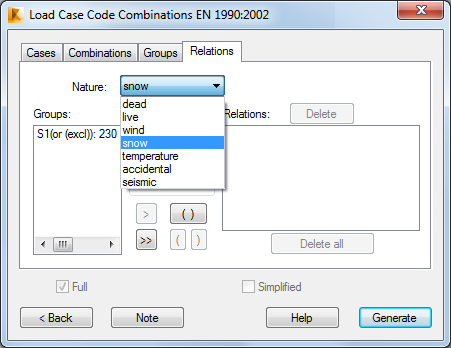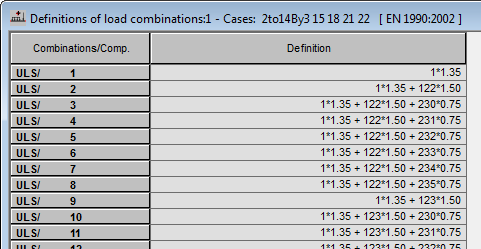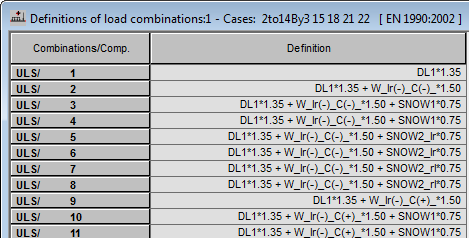Learn how to generate automatic load case code combinations.
Load case combinations, which are generated automatically, are used to check resistance and serviceability for real situations in which various loads act simultaneously, as defined by a specific code. If required, you can define the action combinations manually, one by one.
- To verify that the Code combination for your project is correct, select .
- In the Job Preferences dialog box, click the + sign to expand Design codes, and click Loads.
- Select EN 1990:2002 from the Code combination list.
Note: You can click
 to edit the code combination regulations.
to edit the code combination regulations. - Click OK.
- To generate the code combinations, select .
- In the Load case code combinations dialog box, select Full automatic combinations and click More>.
- In the Load Case Code Combination EN 1990:2002 dialog box, select the Relations tab.
- In the Nature drop-down list you can select each type and create relationships between load cases in specific groups. By default, the Robot software automatically creates these groups and relationships.

- Keep the default settings, and click Generate.
Note: You will not see anything happening on the screen at this point.
- In the Menu Bar, select or in the Standard toolbar, click
 (Calculations).
(Calculations). - If a warning message displays, click OK to continue the calculation process.
- To display the Combinations table, in the Menu Bar, select
- The Definitions of load combinations dialog box opens as shown below.

- To change how combinations are displayed in the table, right-click on the combinations table, and select Table columns.
- In the Combinations dialog box, change the Combination description to Case label and click OK.
- The new layout of the table displays as shown below.

- Save the project as Structure-Project-Analysis.rtd.
Click here to go to the Summary.
 (Job Preferences)
(Job Preferences) (Automatic Combinations)
(Automatic Combinations) (Calculations)
(Calculations)